Friday, March 29, 2019
This is our first (of two) port of call in India. I have some mixed feelings about this country, but I’m willing to get out there and see what India has to offer.
Where am I?
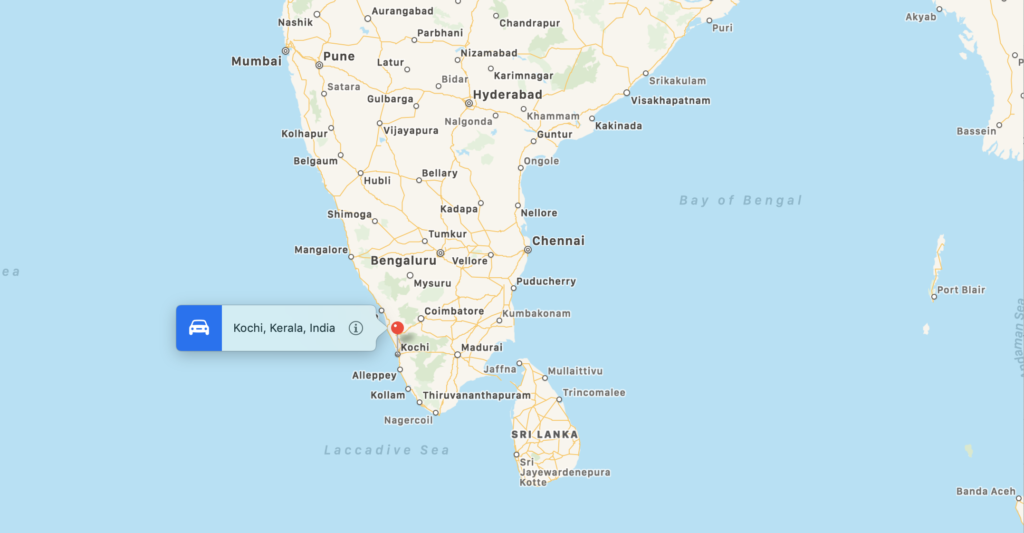
So, what’s been happening?
This morning when I woke up, I stepped outside onto my balcony and this is the sight I beheld.
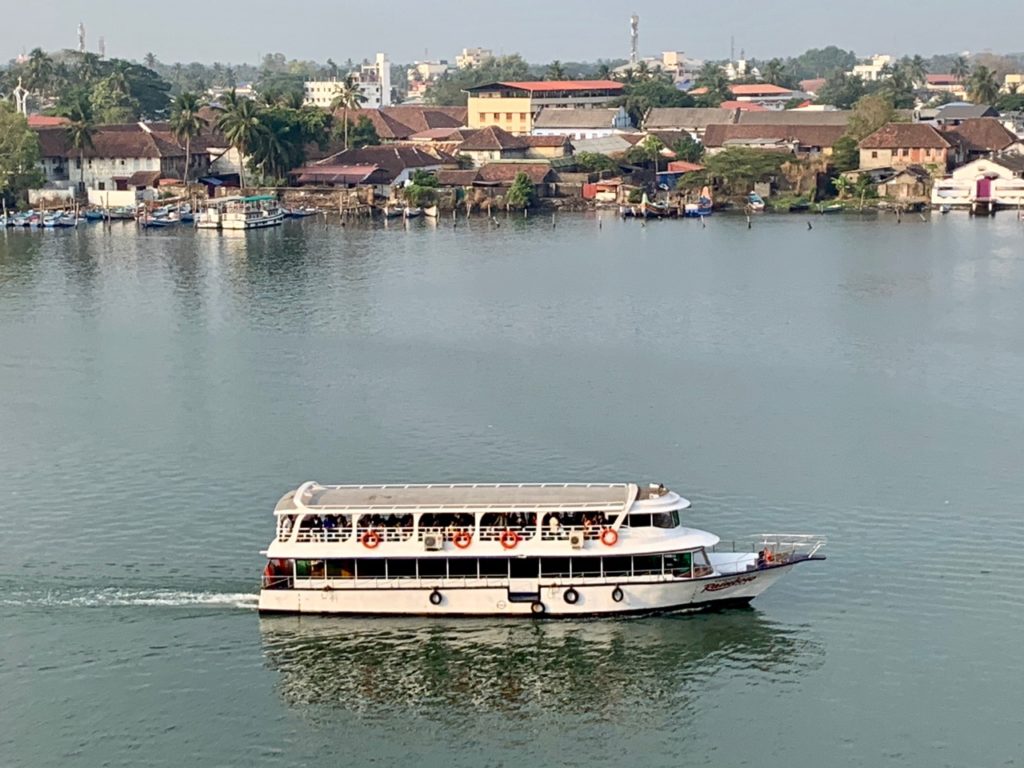
At first, Kochi (also known as Cochin) looked like a nice rustic little place. As it turns out, the people with balconies on the other side of the ship saw something completely different. They saw a large metropolitan area. Personally, I prefer the view you see above. We are actually looking across a “lake” that is connected to the ocean on both sides. On the other side of this “lake” is the Old Fort area which is where I spent my time today.
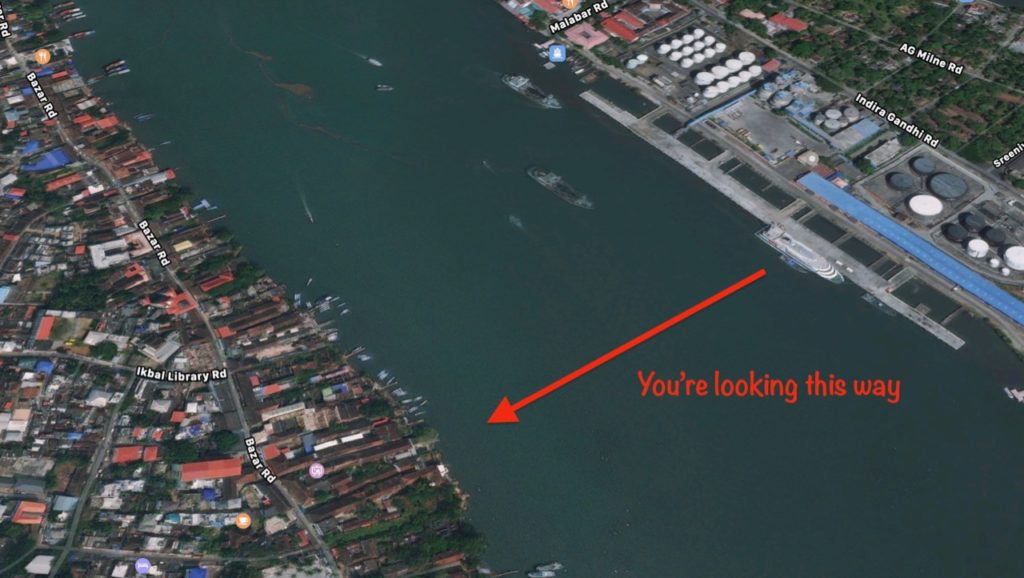
Our bus took us into Old Fort which is very close “as the crow flies” or by boat. On the city streets, it’s quite a trek. The streets in Kochi are narrow and crowded, so driving anywhere takes some time. But, the scenery was interesting along the way. Some of these photos will look like they have a blue-green tint to them. This is because they were shot through a bus window. Click on any of them to see a larger version.

Crossing the lake 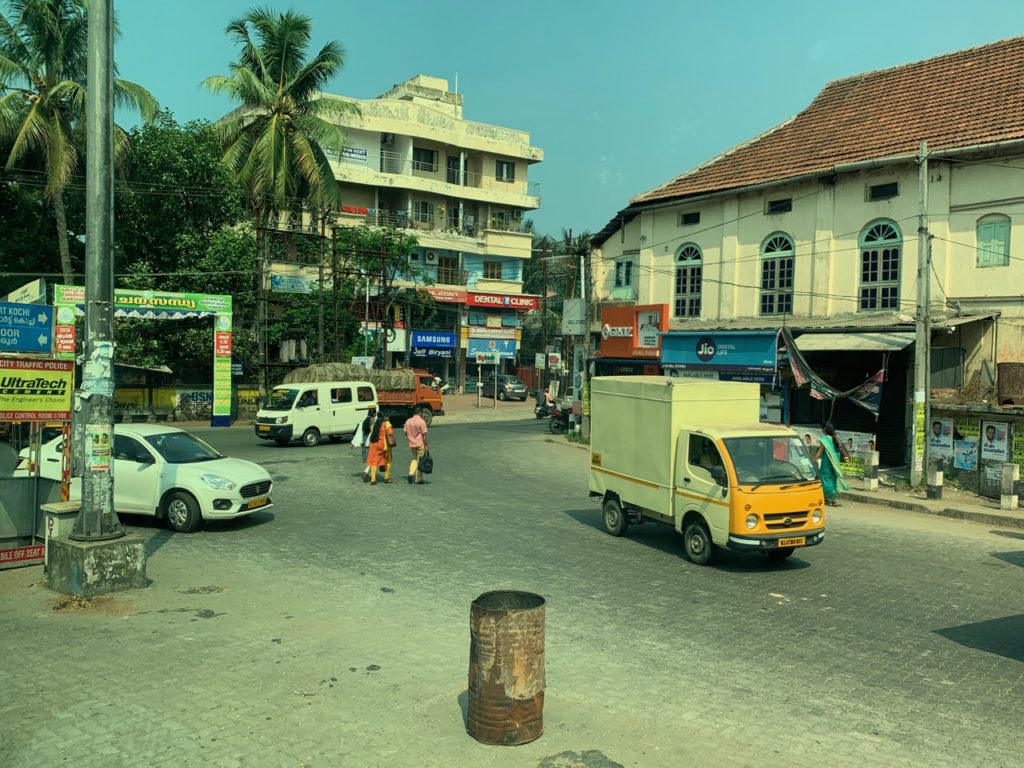
Coming into the Old Fort area 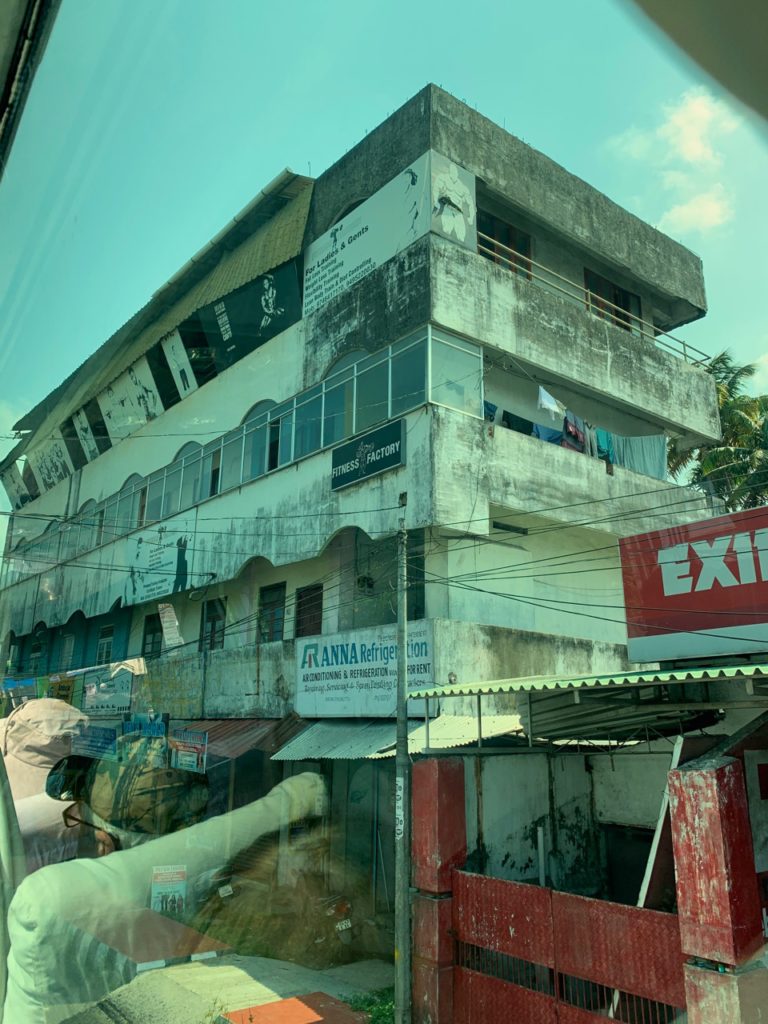
A typical business/residential building 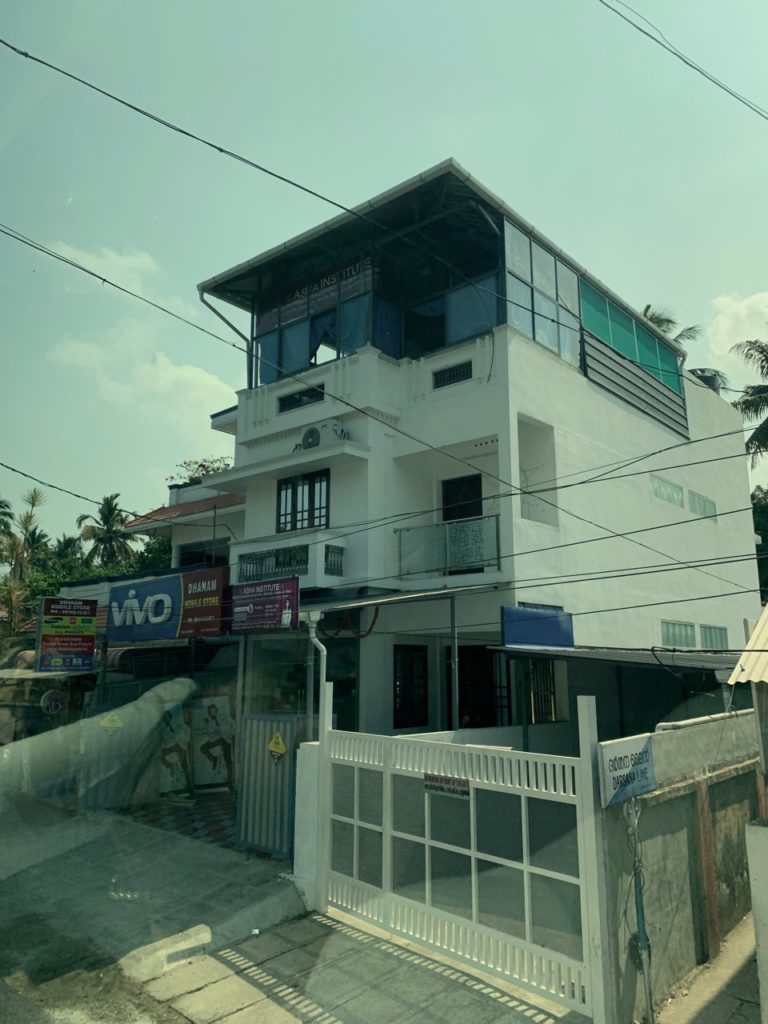
A very nice home for Kochi 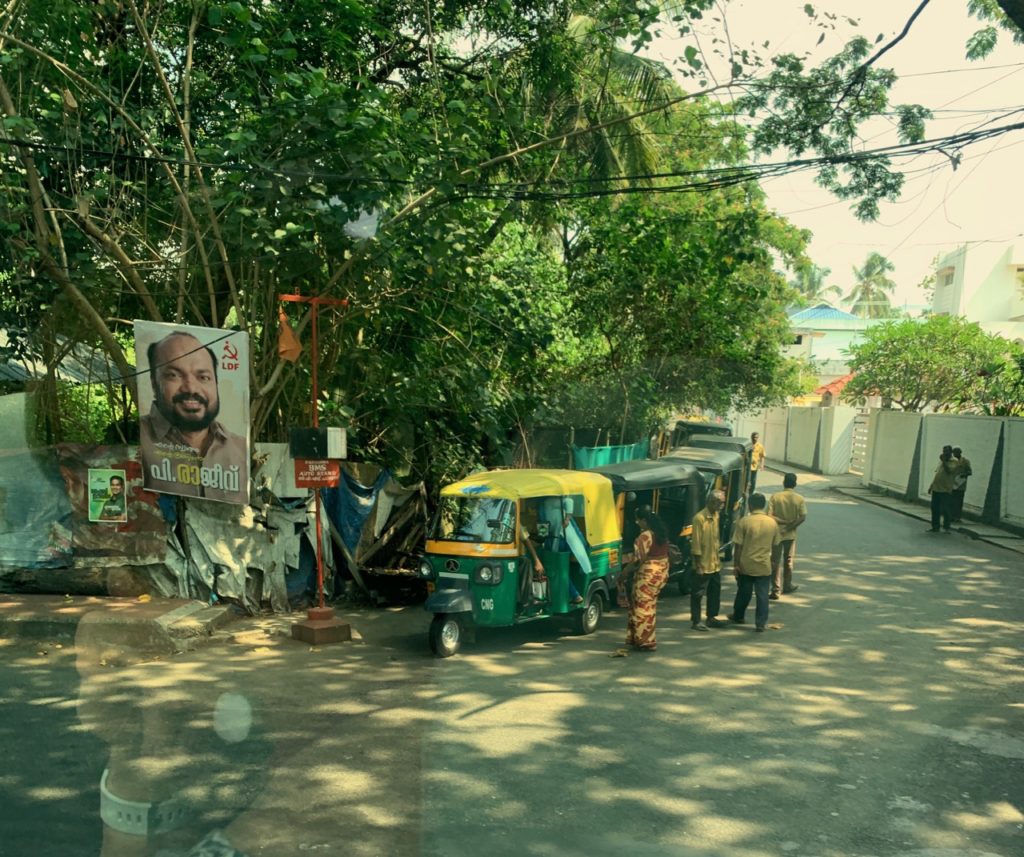
Tuk-tuks are everywhere 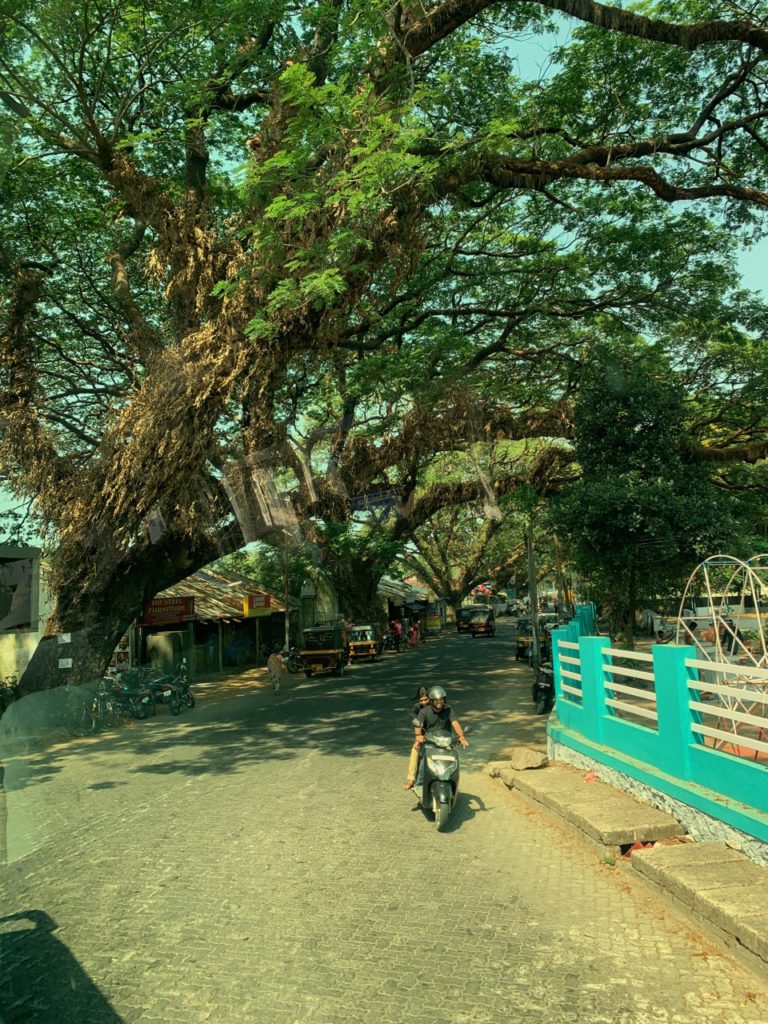
This is an old place. Look at that tree.
Kochi has a long history. People were living here will before the 15th century when the Portuguese came to town and declared the place as their own. Later, the Dutch (in 1663) took Kochi from the Portuguese and kept it as a colony for more than 100 years. In 1814 the British took over Kochi as part of a treaty with the Dutch. As we drive to the Old Fort area, there are many examples of all three eras, as well as of current-day Kochi.
The tour for today was to visit a museum and stage where we would be educated and entertained by a small troupe of dancers performing Kathakali dance, but more on that later.
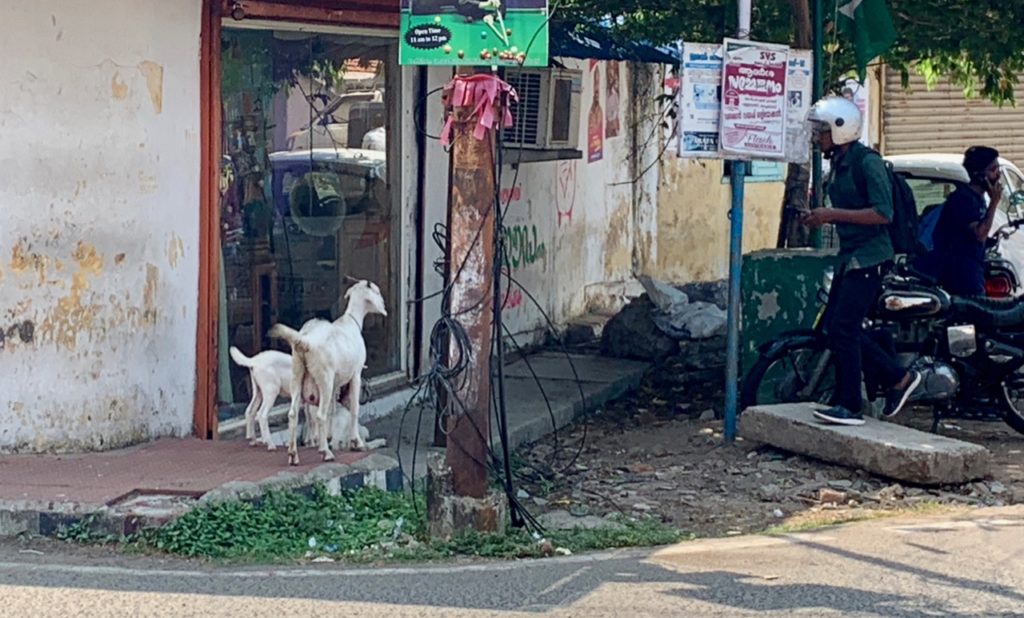
Our walk also took us past the headquarters of the Communist Party of Kochi. Judging by all of the political advertising I saw all over town, there must be an election coming soon. With that in mind, I’m sure that the Communist Party was using its headquarters to show the electorate how much the lives of the citizens of Kochi would improve if the party of the red flag were to be elected en masse.
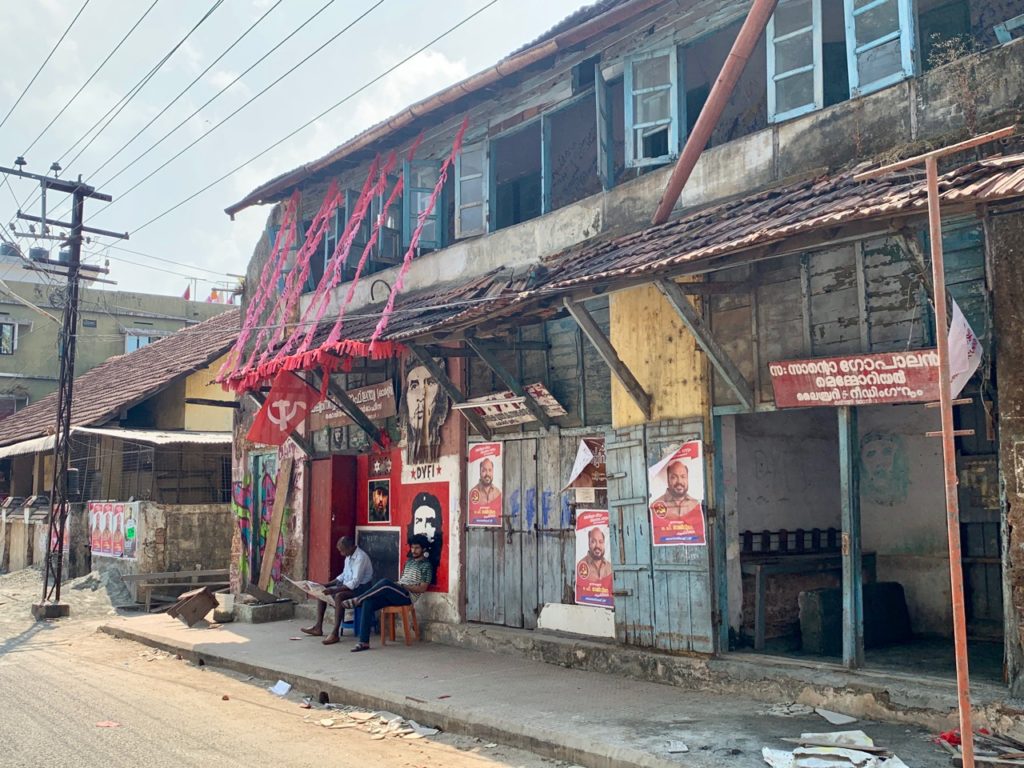
Just before we arrived at the museum/theater this sign tried to induce us to stop in for some very tasty, but perhaps not too attractive food. Most of us had enjoyed a large breakfast, so nobody on the tour was inclined to detour from our intended destination.
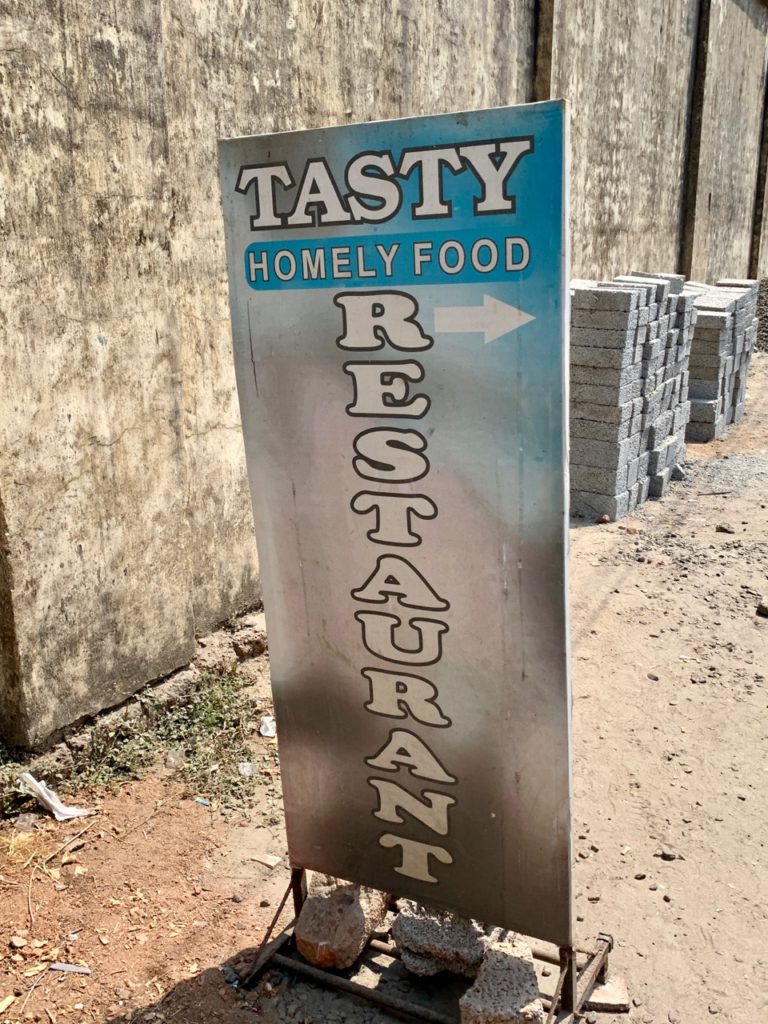
Eventually, we found the theater building. It was a very nice looking place in the middle of a very chaotic neighborhood. I, for one, was happy to get inside the building and to the safety it afforded from the crazy traffic on the street. BTW, we were also walking on the street, as sidewalks were practically non-existent. So we had to learn how to “mix in” with the two, three, and four wheeled vehicles on every side of us.
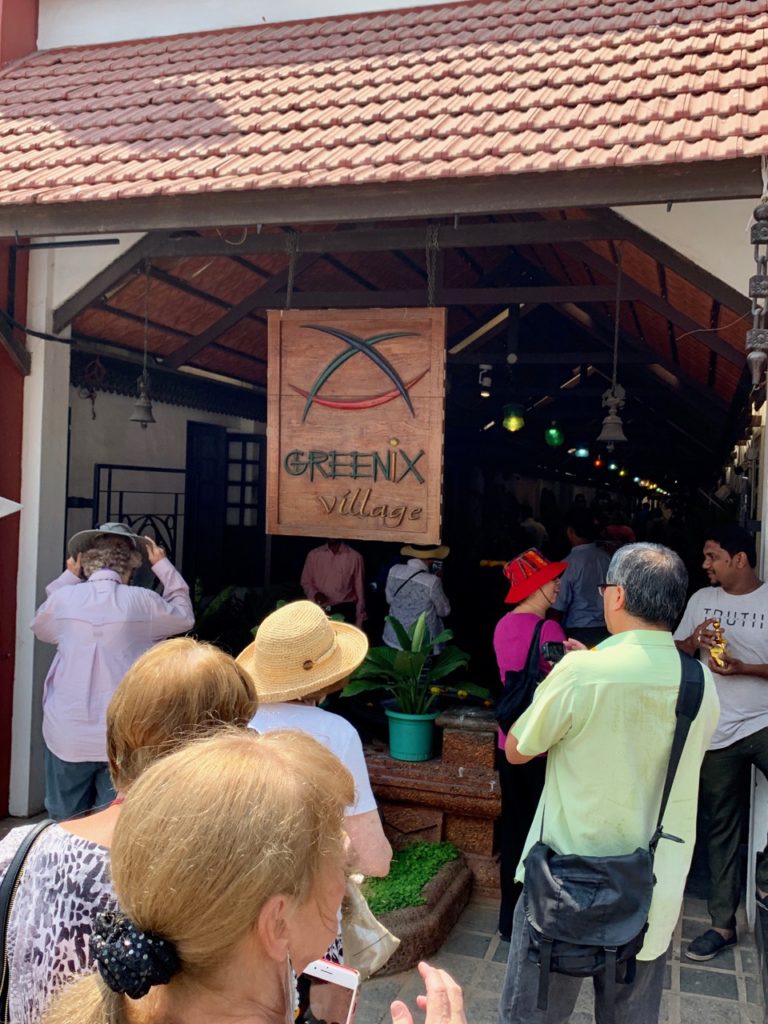
Inside the building was a long hallway. As we entered, a nice museum was to our left (which did not allow photos, sorry) a restaurant on the right, and a theater at the back. Down the hallway was some absolutely beautiful pieces of religious art.
We were ushered inside the theater which was small (about 100 chairs) and dark. I kinda liked the darkness as it helped to hide what I thought might be things I really didn’t want to see. But, that’s just one man’s opinion/delusion.
But before I continue, let me write a bit about Kathakali.
Kathakali is a dance style that is unique and traditional to the area around Kochi. It is an intense form of dance that involves using gestures, expressions and eye movements to tell ancients stories. To me, it felt like some crazy cross between opera and kabuki (Noh) as they might be performed for the deaf. Like ballet, student of Kathakali will study for many years (usually twelve) two learn the expressions and movements of the dance style. You can learn more about that in the following video.
NOTE: I recommend changing the resolution of the following video to the best that your Internet connection will allow.
Although I did record our entire performance, it is too large to upload and display here. Still, I’ll show you the very end of the dance (which lasted in its entirety a good twenty minutes!) where the evil demon Choothu kills the beautiful young woman. But, I’m getting ahead of myself.
Before the show started, one of the actors came out on stage and showed us how he applied his very dramatic makeup. In the dance to be performed, this man would become the green-faced demon, Choothu.
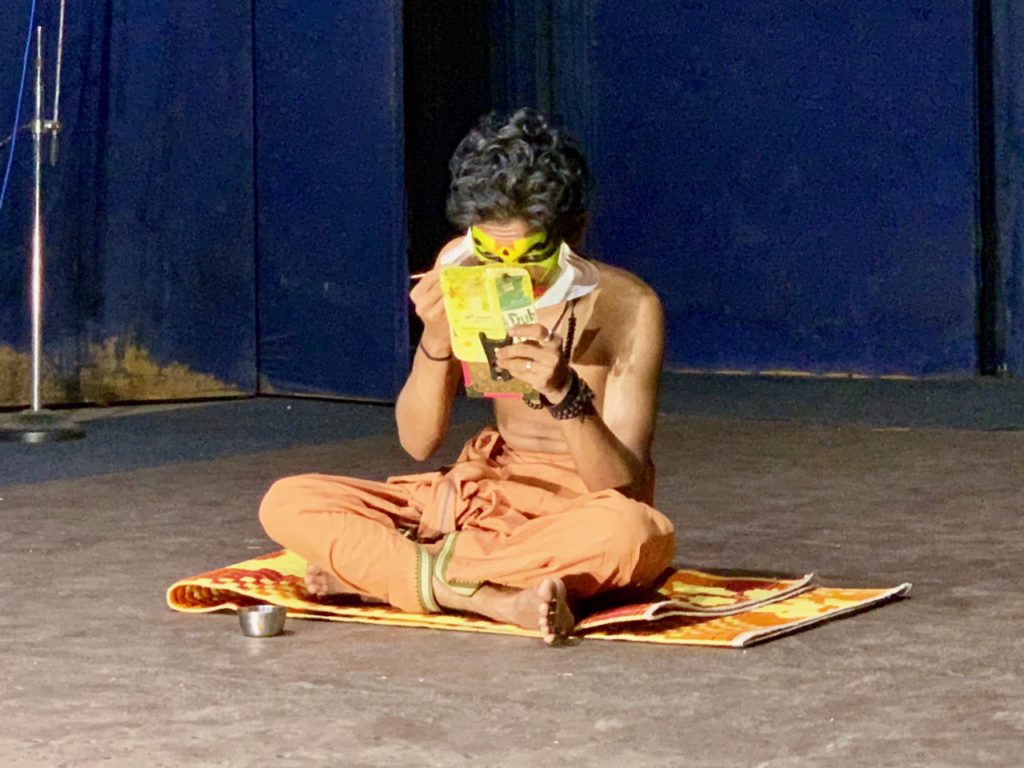
In the dance, Choothu tries to seduce a woman who is known to be the most beautiful in the land. He is unsuccessful in his wooing, and ultimately kills the woman because she rejects him. Here is the last few minutes of the play as it was presented to us.
Now, if the woman in the dance performance does not strike you as all that beautiful, please consider that female parts in Kathakali are often played by men. That was the case in this theater.
After the play, the actors were nice enough to allow us to come up on stage individually for photos. So, here’s my proof that I was actually there.
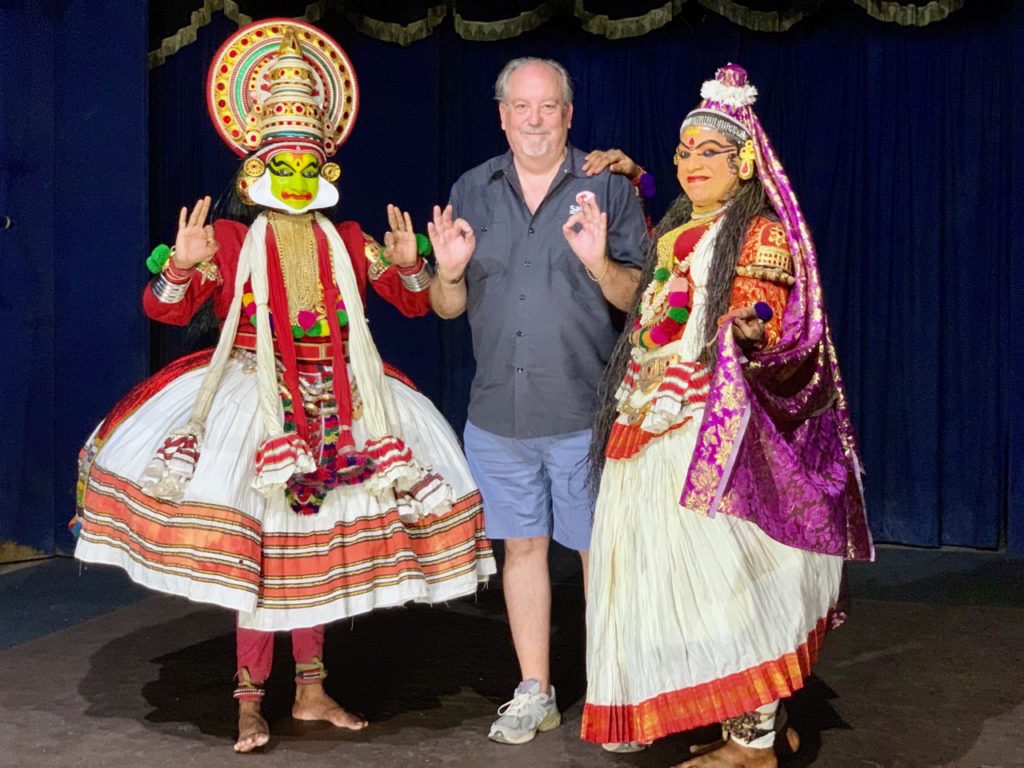
After the performance we all risked our lives to return to the bus. The bus driver then risked our lives returning us to the ship. Still, along the way I found a few sights that I thought might be fun to share.
First, there’s this beautiful Royal Enfield motorcycle. Royal Enfield used to be a british motorcycle brand and was a rare treat to find when I first started riding motorcycles in 1967. Although they are now made in India, the styling of the bikes still looks like 1940’s and 50’s british motorcycle legends like Triumph and BSA. Look closely and you’ll see that they still make these bikes with drum brakes!
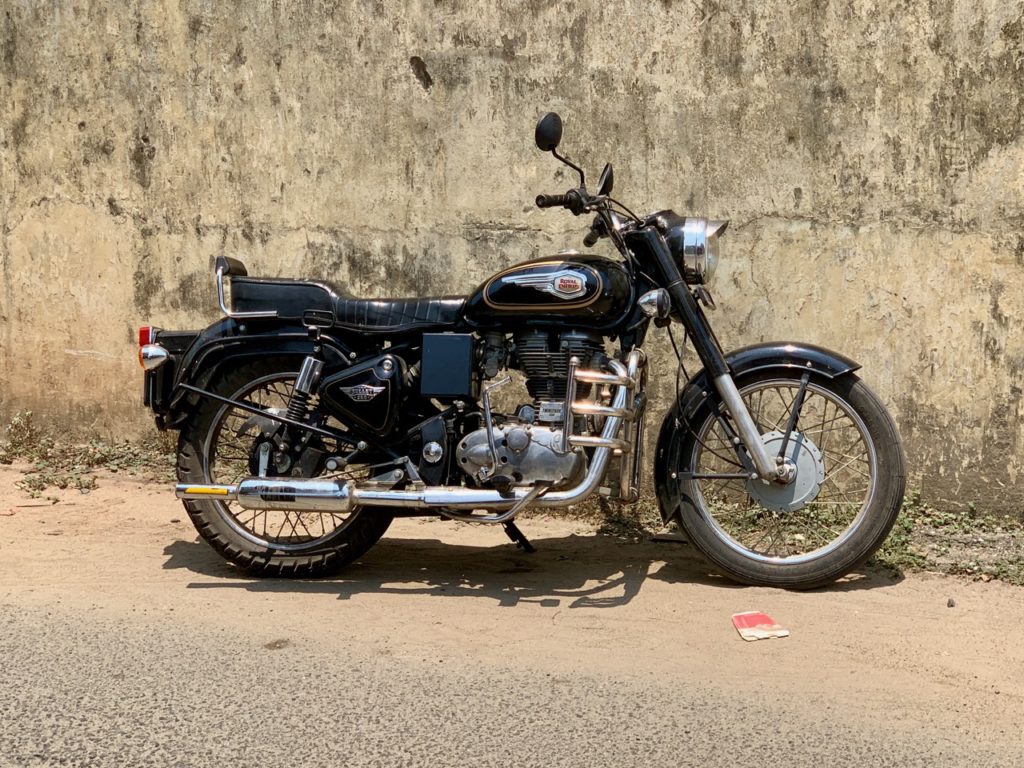
So, enough with motorcycle nerdity. Let’s move on.
On the road home (but still in Old Fort) we passed this rather interesting clinic that seems to provide natural health services for the gay community. (?)

And, finally, what would a drive through any town in southern India be like without a parade of tuk-tuks.
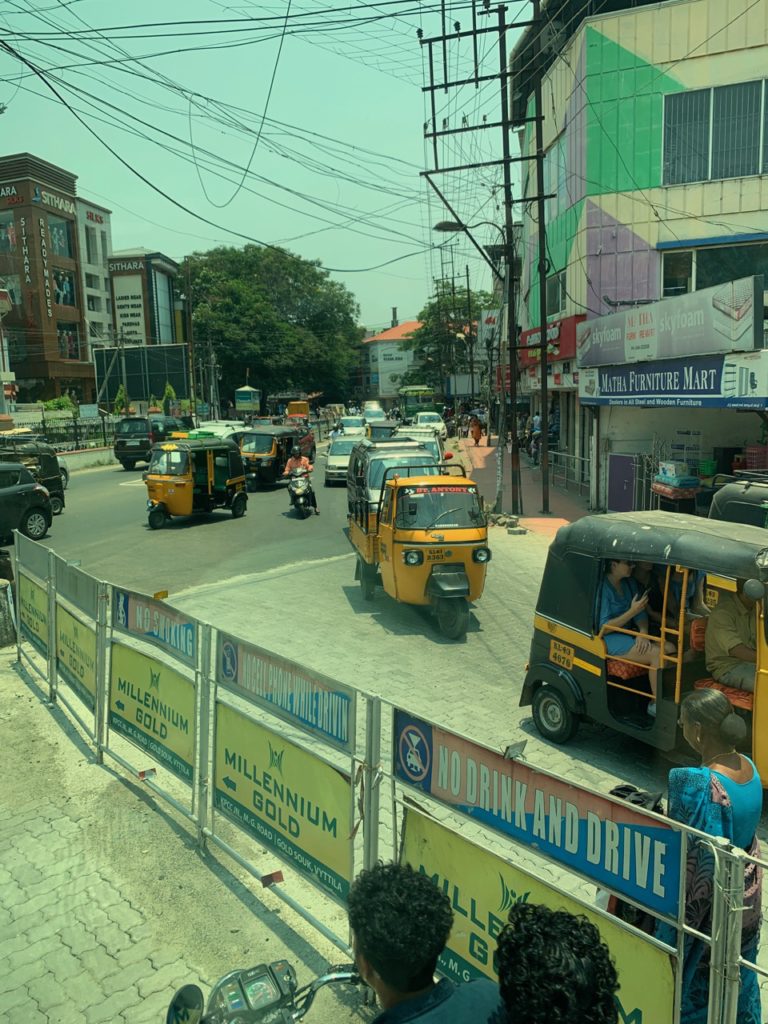
Once I was back aboard ship, I took a quick shower (the heat and humidity of this place simply cannot be described) and headed to the Sea View bar on the Lido deck, aft, for our happy hour sail-away. Just before departure, I snapped these quick photos.
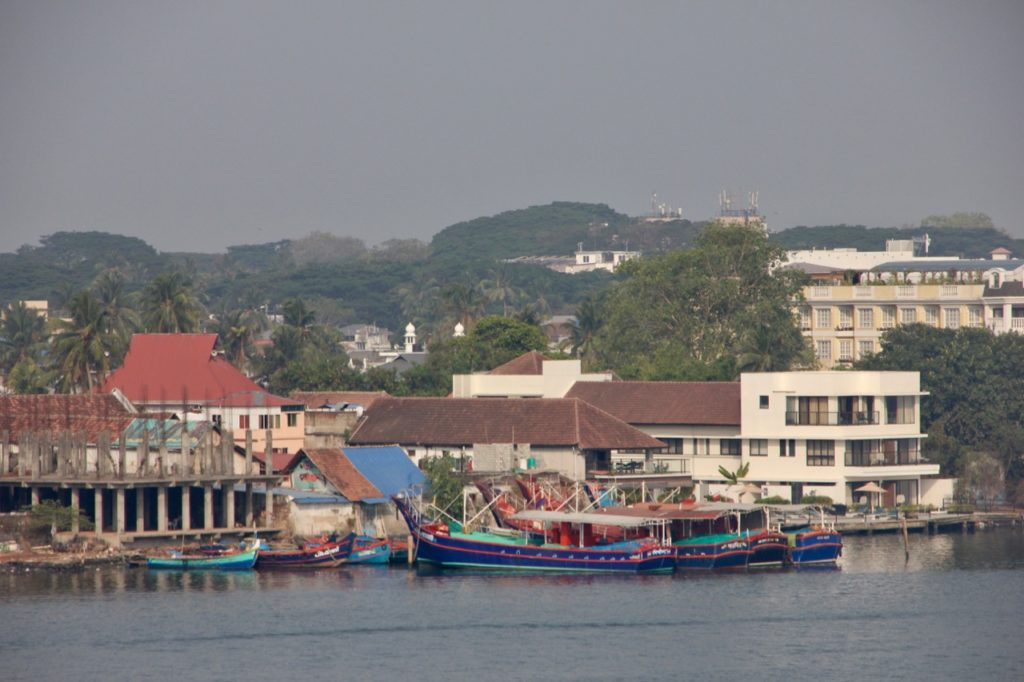
Colorful Old Fort 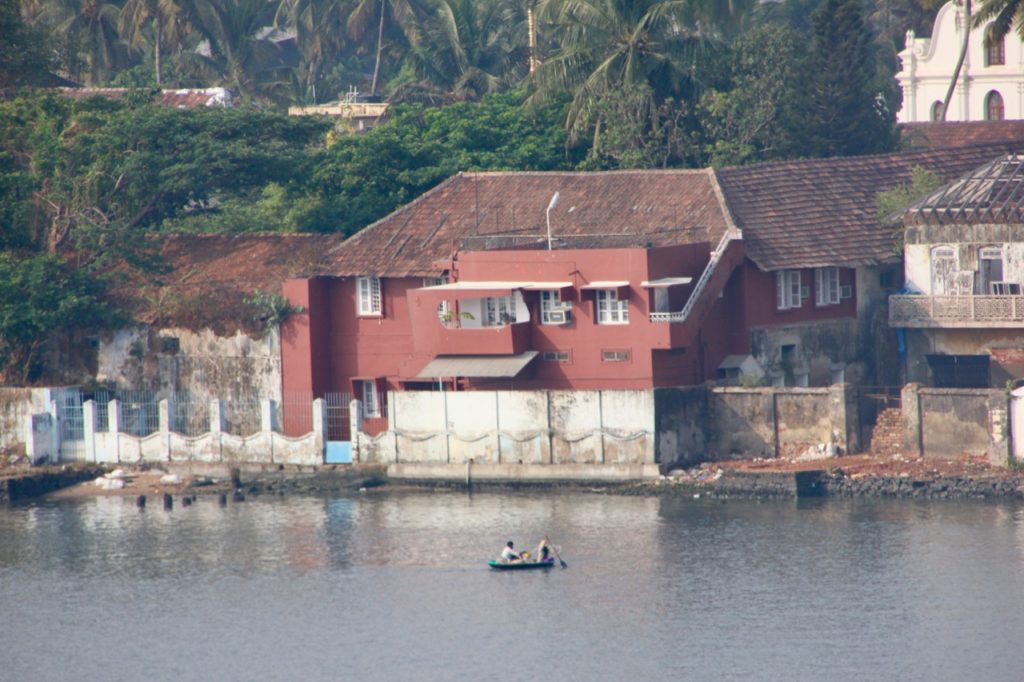
This building is likely 200 years old! 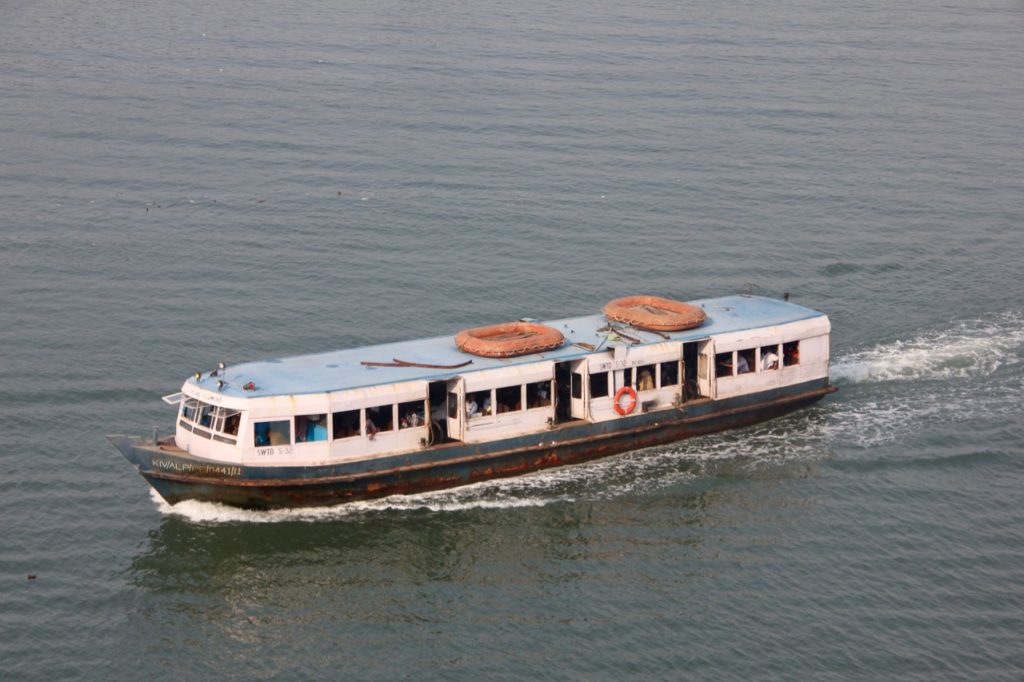
The local ferry
So, our quick stop in Kochi was very interesting, educational, and entertaining. If any of you, gentle readers, were to consider a visit here, I could recommend it, but only go during a season when the weather is cooler, like in August.
So, what’s coming up?
We have left Kochi and will spend a day at sea, followed by two days in Mumbai.
G’night!

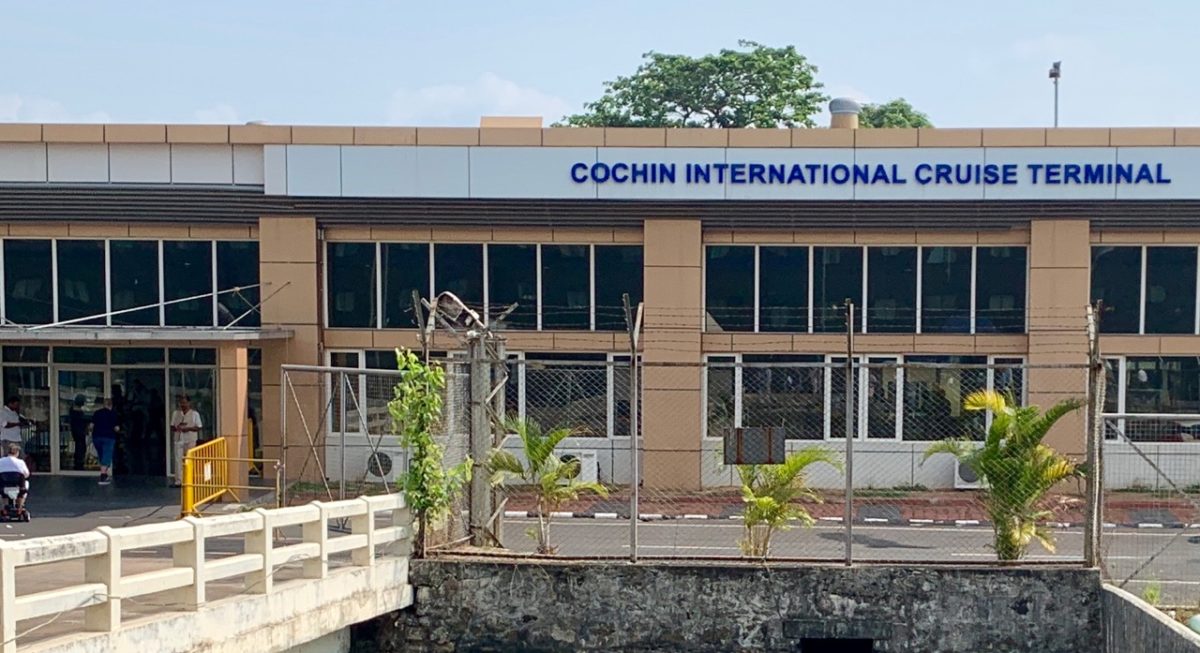
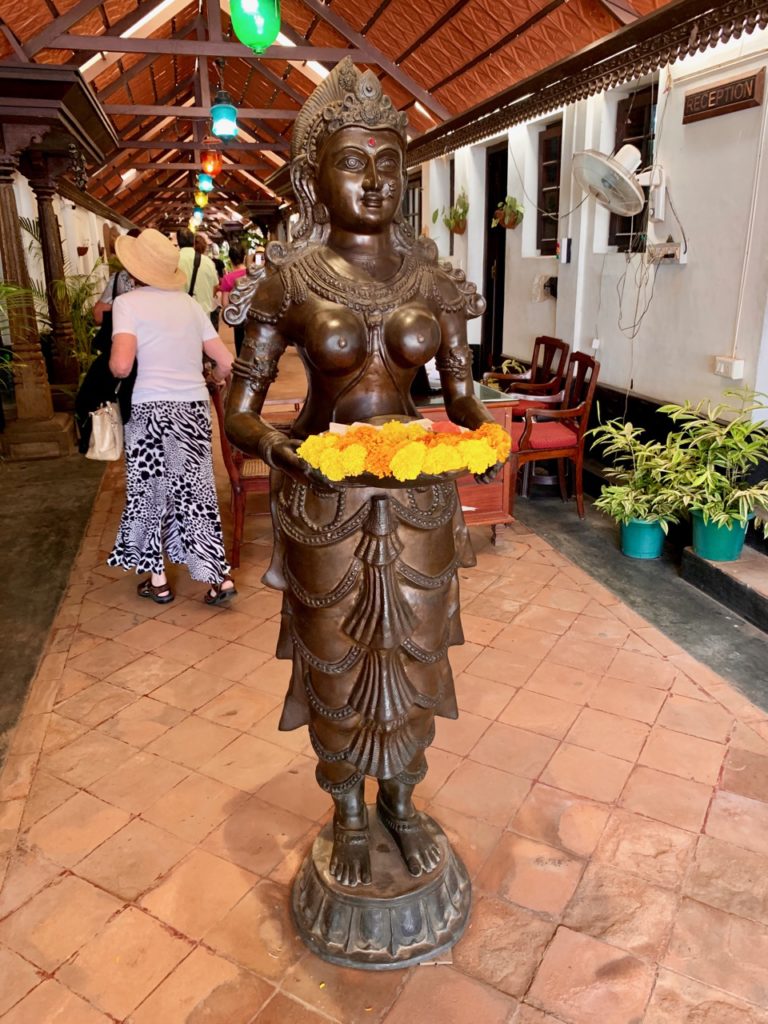
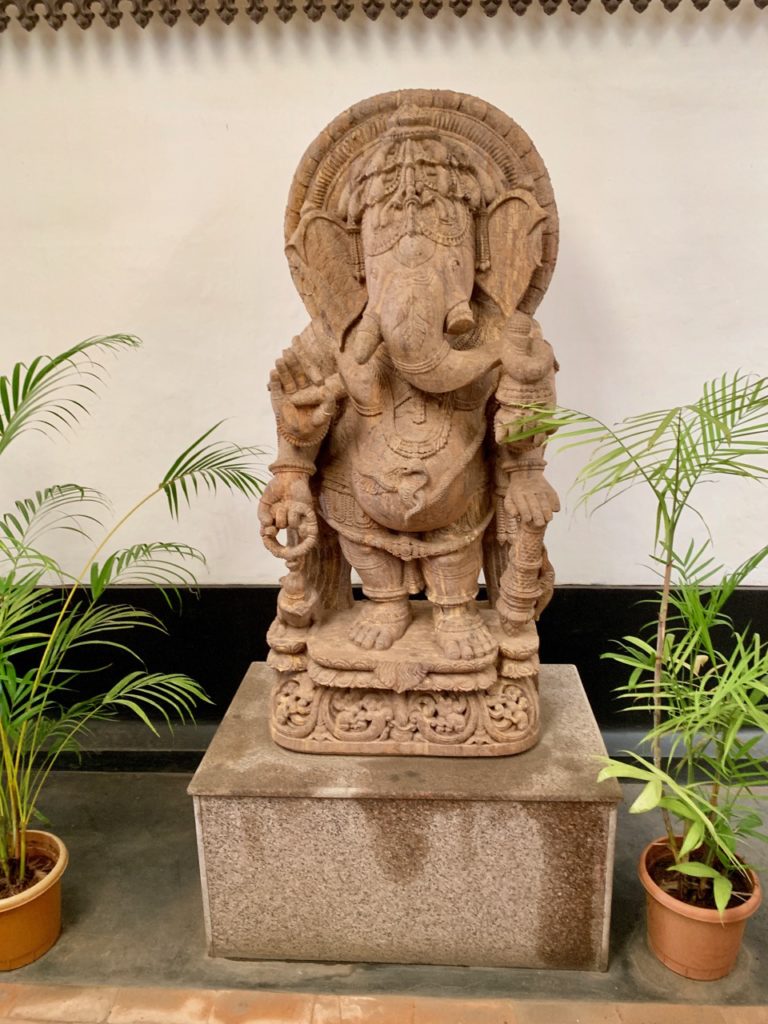
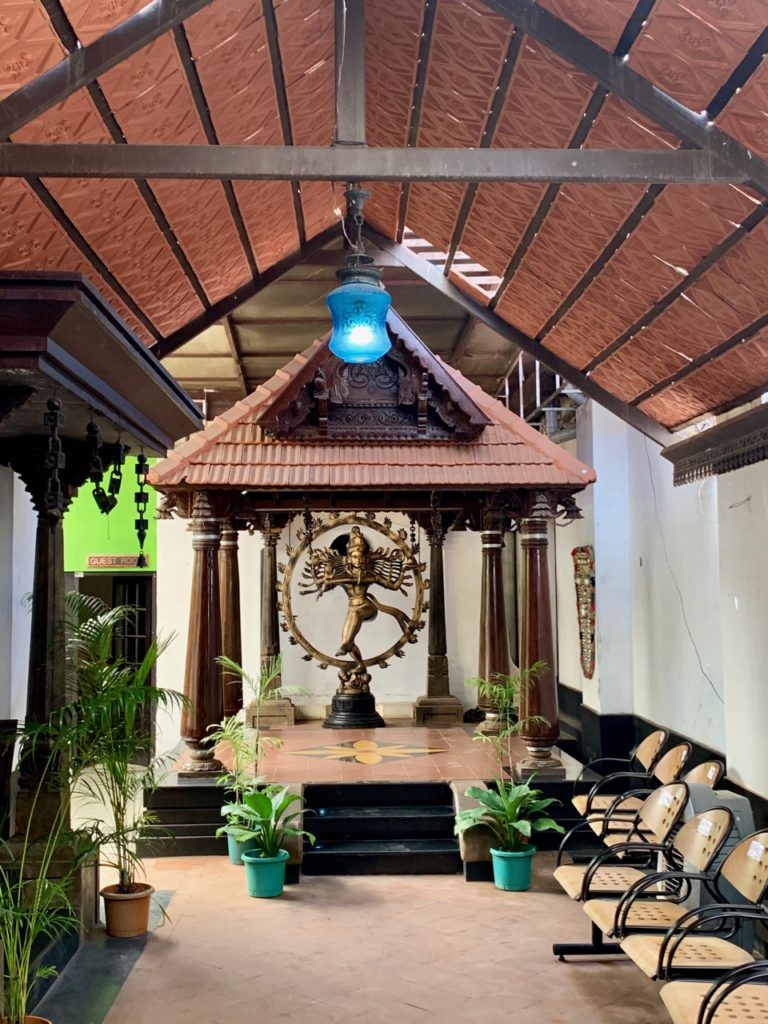
This post made me laugh out loud. Gotta love your sense of humor🤣